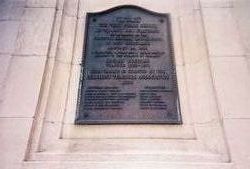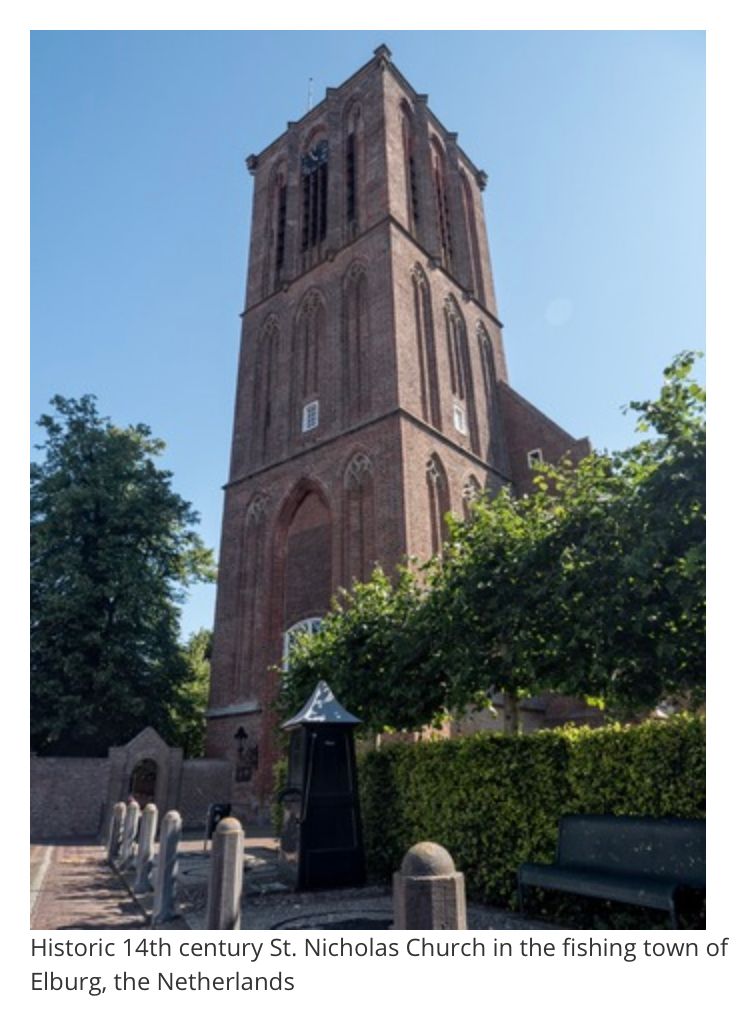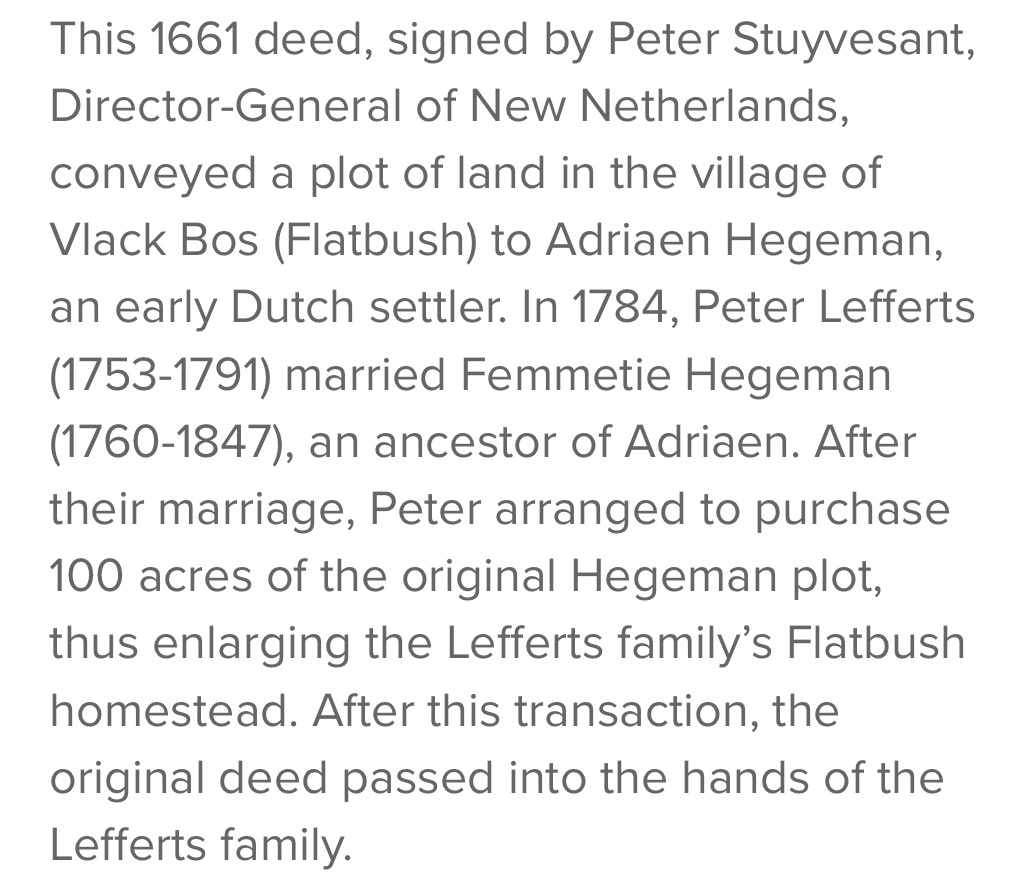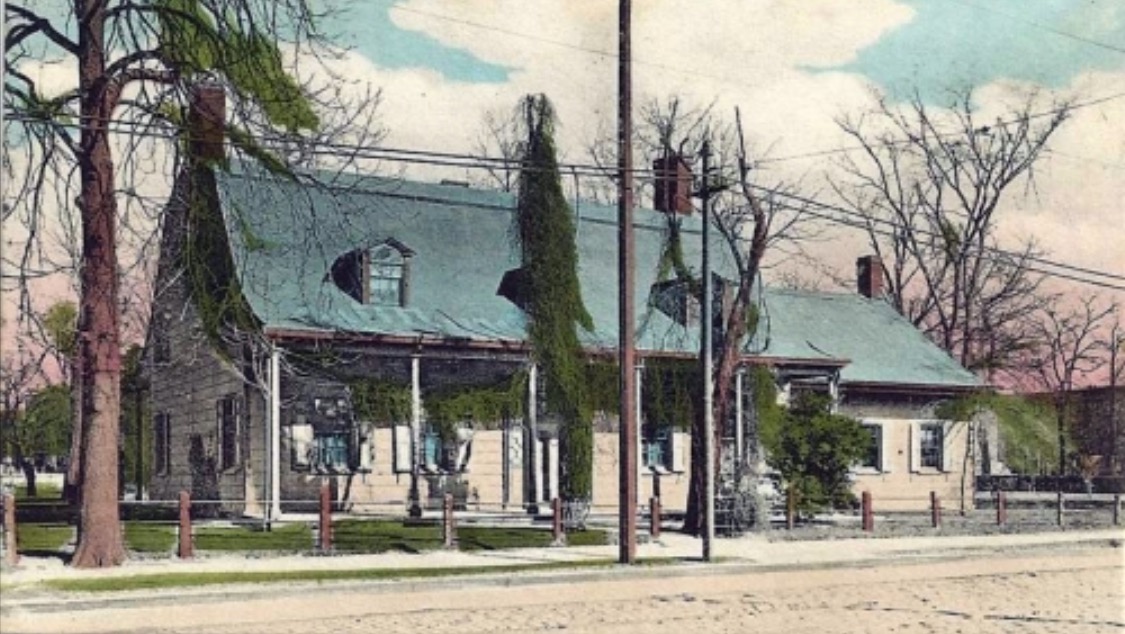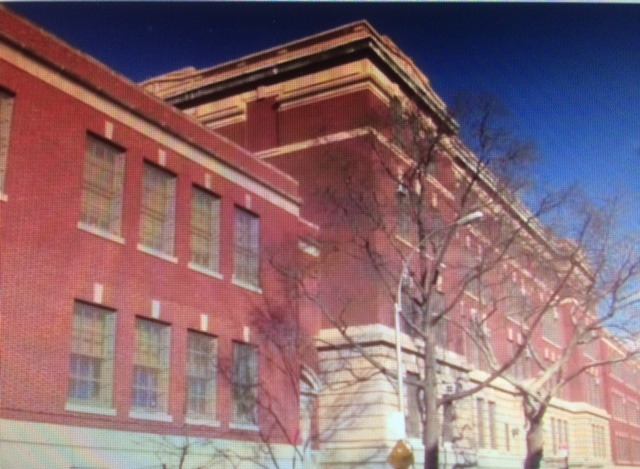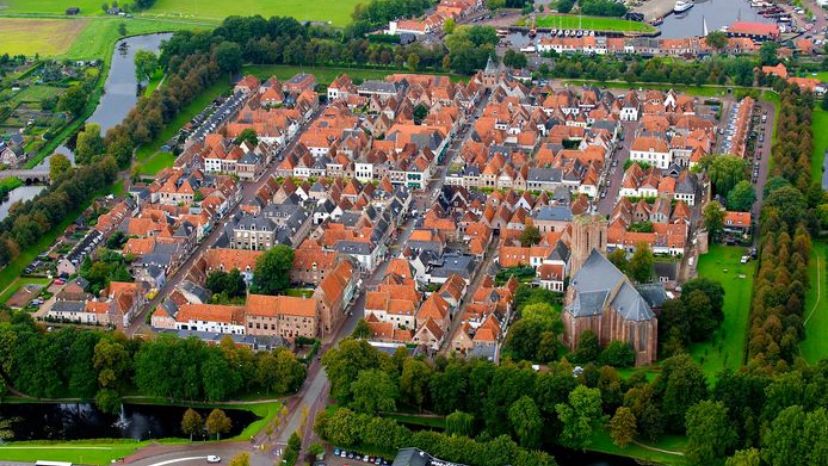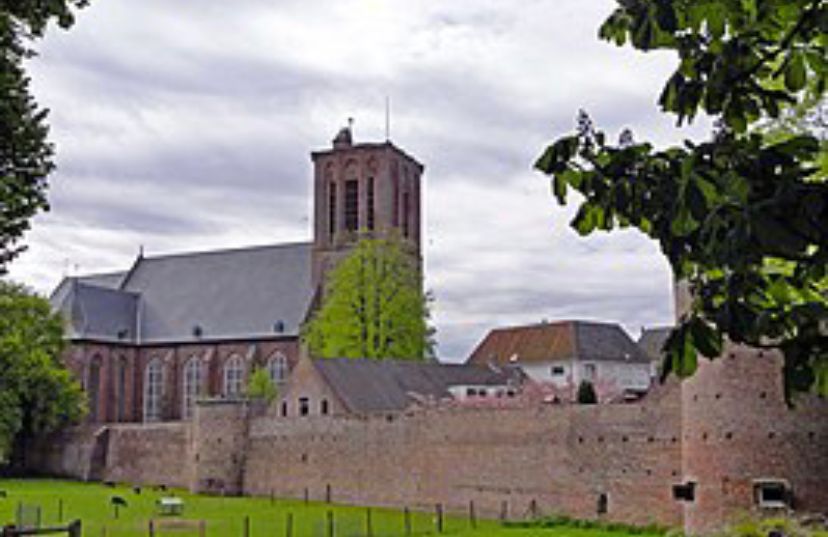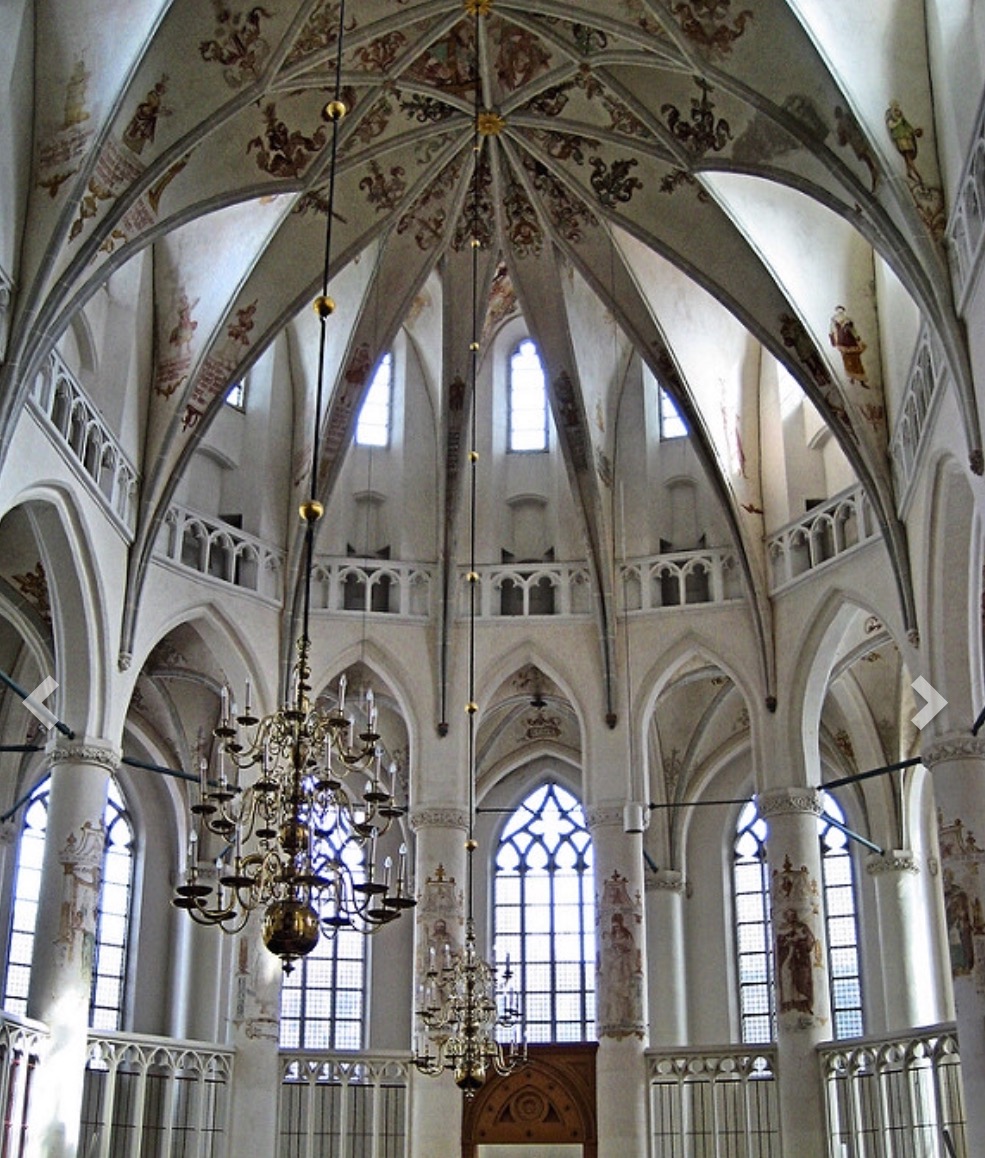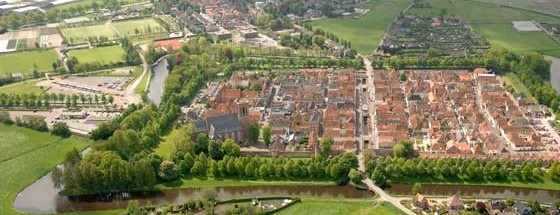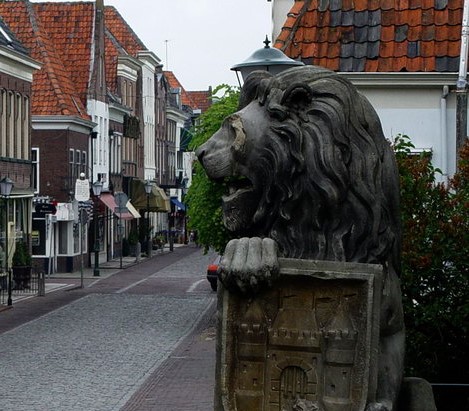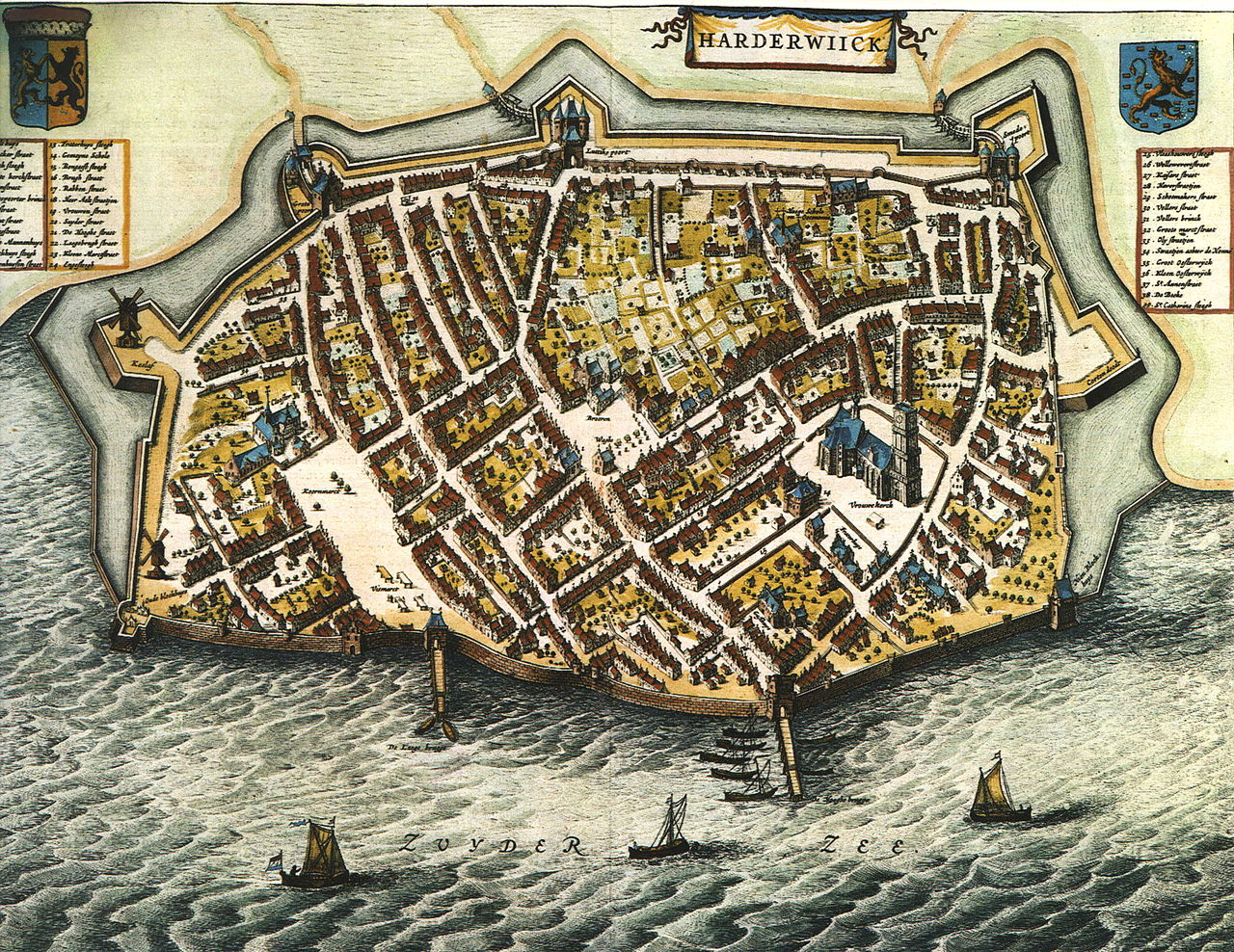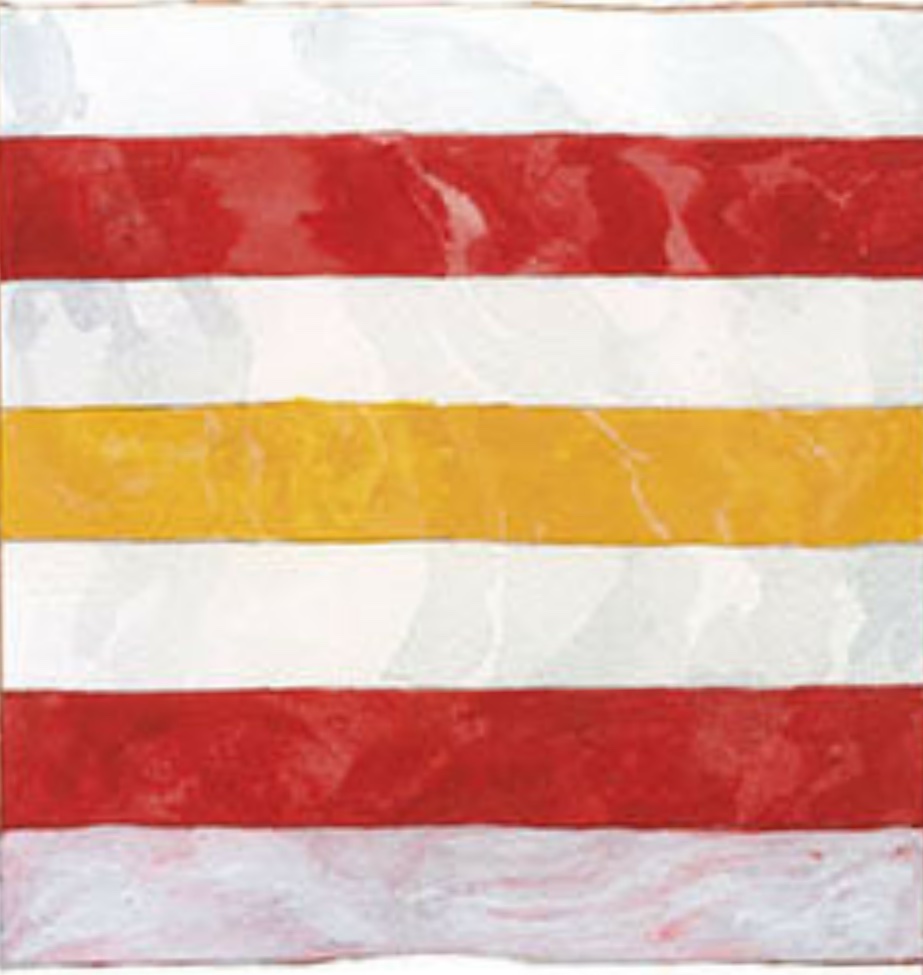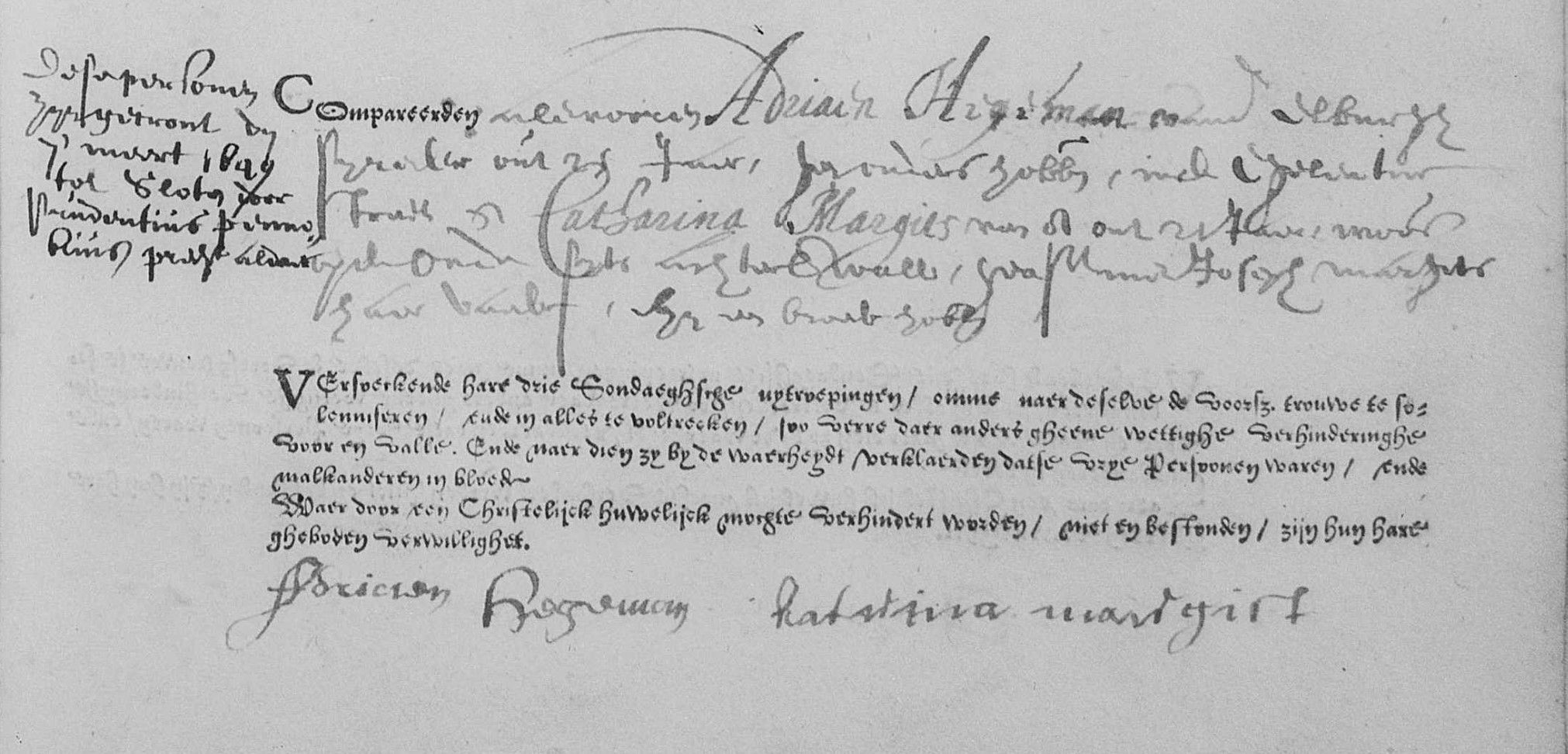Adrian (Adriaen) Hegeman was born in Elburg, Holland in 1625. He was educated in Vorchten, Holland, where his father was a minister at the Vorchten Dutch Reformed Church. Shortly after his father died in 1637, Adrian was sent back to Elburg to apprentice as a silk weaver. He married Catharina Margetts in Sloten, Amsterdam on March 7, 1649.
Adrian emigrated to New Amsterdam (New York City) in 1652 from Elburg. He was working as a silk weaver on Egelantier Street in Elburg before he emigrated to the New World. His wife and two sons made the trans-Atlantic journey together. Five more sons and a daughter were born in New Netherland.
Adrian Hegeman helped settle Flatbush (Midwest) Kings County, Long Island, New York. During his lifetime, he acquired more than 350 acres of land and became one of the largest property owners in the Village of Flatbush. His original deed from April 12, 1661 is signed by Peter Stuyvesant, the Director General of the Colony of New Netherland. It is perfectly preserved and is held at the newly-formed Center for Brooklyn History. It is a collaboration between the Brooklyn Historical Society and the Brooklyn Public Library.
Adrian was instrumental in the establishment of the Old Flatbush Dutch Reformed Church and School. He served as the first "shout" or mayor of the five villages which would eventually become Brooklyn. He was the first teacher at the Flatbush School in 1658. A bronze plaque honoring him as a teacher is attached to Erasmus Hall High School in the general area of where the old school once stood. Erasmus Hall High School is located across the street from the church and cemetery on Flatbush Ave. Erasmus Hall Academy, built in 1786, is located behind Erasmus Hall High School.
Adrian Hegeman Public School number 92, Hegeman Avenue, and an affordable housing high rise, The Hegeman, in Flatbush, are all named in his honor.
The bronze plaque at Erasmus Hall High School reads:
On this site
Was opened
The first public school in Midwout
Now Flatbush
By the authority of the Director
General and Council of New Netherlands
January 29, 1658
Adrian Hegeman, teacher
1659-1671
Adrian "Adriaen" Hegeman was the son of Reverend Hendrick (Henrick) Hegaman (1595-1637) and Marricken Barents. Rev. Hendrick Hegeman was born in Elburg, Holland. He was educated at the University of Franeker in Holland in 1617 and served as the minister of the Vorchten Dutch Reformed Church from 1624 until his death in 1637. Shortly after Hendrick's death, his widow remarried the new minister of the church and young Adrian was sent to Elburg to live with relatives on Egalantier Street. In addition to his early schooling, Adrian was trained as a silk weaver. The trade was passed down through successive generations. Adrian Hegeman was the grandson of Jacob Hegeman (1575-1625) from Harderwijk, Holland (1575-1625) and Antigen Feith. Adrian was the great-grandson of Lambert Hegeman (1545-1611) also from Harderwijk. He later moved to Elburg.
Lambert Hegeman was the brother of Colonel Wolter Hegeman, the hero of the Seige of Bronkhorst. He died after being shot by a deserter during the seige in 1578. Colonel Hegeman was a very conspicuous soldier. It is written that his name and the rumor of his arrival terrified the enemy. At Deventer he captured the works that defended the bridge and destroyed it. He retook the town of Anhalt and the castle of Hattem.
Adrian Hegeman was the great-great-grandson of Hon.Jacob Hegeman (1520-1570) from Harderwijk. Jacob was an alderman as well as the Burgomaster (Mayor) of Harderwijk. Elsgen Cornelisse was his great-great grandmother.
The earliest historical record of the Hegeman family states, "…Duke Willem Van Gelder, in 1402, bequeathed to Jan Hegeman an annuity of fifty gold guilders."
The early Harderwijck Hegemans spelled their names Hegheman, Heegman, and Heegeman.
NOTE: The original Adrian Hegeman (1625-1672) homestead and farm was located on the east side of Flatbush Avenue at Winthrop Street. The farm adjoined the Lefferts farm on the north and encompassed the future Clarkson farm on the south. Matthew Clarkson purchased a stone house and acreage from Adrian Hegeman (1691-1772), a school teacher, local leader, and a grandson of Adrian Hegeman. The Adrian Hegeman stone house was located between Midwood Street and Rutland Road. Adrian Hegeman inherited it from his father Abraham Hegeman (1662-1715) who inherited the parcel from his father Adrian Hegeman (1625-1672). The original Adrian Hegeman homestead and farm passed to his son Joseph Hegeman (1651-1725). Joseph willed it to his son Rem Hegeman (1685-1767). Rem passed it to his son Evert Hegeman (1720-1779).
One hundred acres of the original Adrian Hegeman farmstead was purchased by Peter Lefferts (1753-1791) who married Femmitie Hegeman (1760-1847) in 1784. She was the daughter of Evert Hegeman. The original Leffert farm was north of the original Hegeman farm on the east side of Flatbush Avenue. After the transaction, the original Hegeman deed passed into the hands of Peter Lefferts. The deed remained in the Lefferts family direct line at the Lefferts Flatbush house until it was given to the Brooklyn Historical Museum. Peter Lefferts and Femmitie Hegeman Lefferts lived in the Lefferts House located at 563 Flatbush Avenue at Maple Street. In 1918, the Lefferts House was moved two miles north and placed on the west side of Flatbush Avenue at Prospect Park.
Eventually, all of the land between Flatbush Avenue on the west, Fenimore Street on the south, Lincoln Road on the north, and Rogers Avenue on the east was owned by James Lefferts (1855-1915). The original Leffert Lefferts (1645-1704) which adjoined the Adrian Hegeman (1625-1672) farm on the east side of Flatbush Avenue, encompassed a total of 726 acres. In 1893, James Lefferts (1855-1915), great-great-great-great-grandson (4th. great-grandson) of Leffert Lefferts (1645-1704), subdivided the entire 726 acres of the Lefferts farm holdings into 600 building lots. He sold the lots to developers. James Lefferts supervised the construction of the homes from the Lefferts House at 563 Maple Avenue on Flatbush Avenue. James Lefferts attached a land use covenant ensuring that only substantial houses could be built in what would become called the Prospect Leffert Gardens section of Flatbush, New York. Construction began in 1896 at 185-191 Lincoln Road. The first houses were designed in the Romanesque and Renaissance Revival style. By 1935 the last of 667 buildings was completed. This section is of Prospect Lefferts Gardens is a U.S. Historic District (Lefferts Manor Historic District). It was added to the National Register of Historic Places in 1992, with a boundary increase in 2017. The original covenant is still in effect there to this today.
All existing structures were torn down to make way for the Prospect Leffert Gardens subdivision. The only remaining structure was the Lefferts House which was built in 1783 on the same foundation as the first house. The first Lefferts house was built in 1666. It was burned to the ground during the American Revolution in 1776. The second Lefferts House now serves as a living museum at Prospect Park.
Pieter Janse Hauwert (1621-1661), the 5th. great-grandfather of James Lefferts (1855-1915), father of Leffert Lefferts (1645-1704) and his neighbor Adrian Hegeman (1625-1672), obtained their deeds from Peter Stuyvesant, Director General of the Colony of New Netherland in 1661. Leffert Lefferts changed the original surname from Hauwert to Lefferts. Pieter Janse Hauwert died the same year he received his deed. Leffert Lefferts inherited the land at about the age of seventeen.
Much of the genealogical and historical information is from: The Genealogy Page of John Blythe Dobson http://heathersgen.blogspot.com/2012/02/adriaen-hagaman-1624-1672.html
Terry T.-September 2009
Updated January 2022
Adrian (Adriaen) Hegeman was born in Elburg, Holland in 1625. He was educated in Vorchten, Holland, where his father was a minister at the Vorchten Dutch Reformed Church. Shortly after his father died in 1637, Adrian was sent back to Elburg to apprentice as a silk weaver. He married Catharina Margetts in Sloten, Amsterdam on March 7, 1649.
Adrian emigrated to New Amsterdam (New York City) in 1652 from Elburg. He was working as a silk weaver on Egelantier Street in Elburg before he emigrated to the New World. His wife and two sons made the trans-Atlantic journey together. Five more sons and a daughter were born in New Netherland.
Adrian Hegeman helped settle Flatbush (Midwest) Kings County, Long Island, New York. During his lifetime, he acquired more than 350 acres of land and became one of the largest property owners in the Village of Flatbush. His original deed from April 12, 1661 is signed by Peter Stuyvesant, the Director General of the Colony of New Netherland. It is perfectly preserved and is held at the newly-formed Center for Brooklyn History. It is a collaboration between the Brooklyn Historical Society and the Brooklyn Public Library.
Adrian was instrumental in the establishment of the Old Flatbush Dutch Reformed Church and School. He served as the first "shout" or mayor of the five villages which would eventually become Brooklyn. He was the first teacher at the Flatbush School in 1658. A bronze plaque honoring him as a teacher is attached to Erasmus Hall High School in the general area of where the old school once stood. Erasmus Hall High School is located across the street from the church and cemetery on Flatbush Ave. Erasmus Hall Academy, built in 1786, is located behind Erasmus Hall High School.
Adrian Hegeman Public School number 92, Hegeman Avenue, and an affordable housing high rise, The Hegeman, in Flatbush, are all named in his honor.
The bronze plaque at Erasmus Hall High School reads:
On this site
Was opened
The first public school in Midwout
Now Flatbush
By the authority of the Director
General and Council of New Netherlands
January 29, 1658
Adrian Hegeman, teacher
1659-1671
Adrian "Adriaen" Hegeman was the son of Reverend Hendrick (Henrick) Hegaman (1595-1637) and Marricken Barents. Rev. Hendrick Hegeman was born in Elburg, Holland. He was educated at the University of Franeker in Holland in 1617 and served as the minister of the Vorchten Dutch Reformed Church from 1624 until his death in 1637. Shortly after Hendrick's death, his widow remarried the new minister of the church and young Adrian was sent to Elburg to live with relatives on Egalantier Street. In addition to his early schooling, Adrian was trained as a silk weaver. The trade was passed down through successive generations. Adrian Hegeman was the grandson of Jacob Hegeman (1575-1625) from Harderwijk, Holland (1575-1625) and Antigen Feith. Adrian was the great-grandson of Lambert Hegeman (1545-1611) also from Harderwijk. He later moved to Elburg.
Lambert Hegeman was the brother of Colonel Wolter Hegeman, the hero of the Seige of Bronkhorst. He died after being shot by a deserter during the seige in 1578. Colonel Hegeman was a very conspicuous soldier. It is written that his name and the rumor of his arrival terrified the enemy. At Deventer he captured the works that defended the bridge and destroyed it. He retook the town of Anhalt and the castle of Hattem.
Adrian Hegeman was the great-great-grandson of Hon.Jacob Hegeman (1520-1570) from Harderwijk. Jacob was an alderman as well as the Burgomaster (Mayor) of Harderwijk. Elsgen Cornelisse was his great-great grandmother.
The earliest historical record of the Hegeman family states, "…Duke Willem Van Gelder, in 1402, bequeathed to Jan Hegeman an annuity of fifty gold guilders."
The early Harderwijck Hegemans spelled their names Hegheman, Heegman, and Heegeman.
NOTE: The original Adrian Hegeman (1625-1672) homestead and farm was located on the east side of Flatbush Avenue at Winthrop Street. The farm adjoined the Lefferts farm on the north and encompassed the future Clarkson farm on the south. Matthew Clarkson purchased a stone house and acreage from Adrian Hegeman (1691-1772), a school teacher, local leader, and a grandson of Adrian Hegeman. The Adrian Hegeman stone house was located between Midwood Street and Rutland Road. Adrian Hegeman inherited it from his father Abraham Hegeman (1662-1715) who inherited the parcel from his father Adrian Hegeman (1625-1672). The original Adrian Hegeman homestead and farm passed to his son Joseph Hegeman (1651-1725). Joseph willed it to his son Rem Hegeman (1685-1767). Rem passed it to his son Evert Hegeman (1720-1779).
One hundred acres of the original Adrian Hegeman farmstead was purchased by Peter Lefferts (1753-1791) who married Femmitie Hegeman (1760-1847) in 1784. She was the daughter of Evert Hegeman. The original Leffert farm was north of the original Hegeman farm on the east side of Flatbush Avenue. After the transaction, the original Hegeman deed passed into the hands of Peter Lefferts. The deed remained in the Lefferts family direct line at the Lefferts Flatbush house until it was given to the Brooklyn Historical Museum. Peter Lefferts and Femmitie Hegeman Lefferts lived in the Lefferts House located at 563 Flatbush Avenue at Maple Street. In 1918, the Lefferts House was moved two miles north and placed on the west side of Flatbush Avenue at Prospect Park.
Eventually, all of the land between Flatbush Avenue on the west, Fenimore Street on the south, Lincoln Road on the north, and Rogers Avenue on the east was owned by James Lefferts (1855-1915). The original Leffert Lefferts (1645-1704) which adjoined the Adrian Hegeman (1625-1672) farm on the east side of Flatbush Avenue, encompassed a total of 726 acres. In 1893, James Lefferts (1855-1915), great-great-great-great-grandson (4th. great-grandson) of Leffert Lefferts (1645-1704), subdivided the entire 726 acres of the Lefferts farm holdings into 600 building lots. He sold the lots to developers. James Lefferts supervised the construction of the homes from the Lefferts House at 563 Maple Avenue on Flatbush Avenue. James Lefferts attached a land use covenant ensuring that only substantial houses could be built in what would become called the Prospect Leffert Gardens section of Flatbush, New York. Construction began in 1896 at 185-191 Lincoln Road. The first houses were designed in the Romanesque and Renaissance Revival style. By 1935 the last of 667 buildings was completed. This section is of Prospect Lefferts Gardens is a U.S. Historic District (Lefferts Manor Historic District). It was added to the National Register of Historic Places in 1992, with a boundary increase in 2017. The original covenant is still in effect there to this today.
All existing structures were torn down to make way for the Prospect Leffert Gardens subdivision. The only remaining structure was the Lefferts House which was built in 1783 on the same foundation as the first house. The first Lefferts house was built in 1666. It was burned to the ground during the American Revolution in 1776. The second Lefferts House now serves as a living museum at Prospect Park.
Pieter Janse Hauwert (1621-1661), the 5th. great-grandfather of James Lefferts (1855-1915), father of Leffert Lefferts (1645-1704) and his neighbor Adrian Hegeman (1625-1672), obtained their deeds from Peter Stuyvesant, Director General of the Colony of New Netherland in 1661. Leffert Lefferts changed the original surname from Hauwert to Lefferts. Pieter Janse Hauwert died the same year he received his deed. Leffert Lefferts inherited the land at about the age of seventeen.
Much of the genealogical and historical information is from: The Genealogy Page of John Blythe Dobson http://heathersgen.blogspot.com/2012/02/adriaen-hagaman-1624-1672.html
Terry T.-September 2009
Updated January 2022
